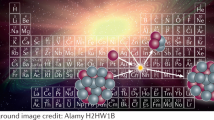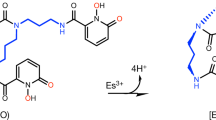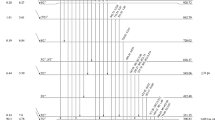Abstract
THE question of the origin of actinium is one of very great interest at the present time. The law governing the position of the radio-elements in the periodic table led A. S. Russell, K. Fajans, and myself independently to predict the existence of a new member of the uranium series, the direct product of uranium-X, occupying the vacant place in the periodic table in the VA family, the heaviest known representative of which is tantalum. I suggested that if this “eka-tantalum” disintegrated dually, as in the case of the C-members occupying the place in the VB family, one mode with the expulsion of a β and the other with the expulsion of an α ray, the product of the first mode would be uranium-II., and of the second actinium. This could only have remained undetected if eka-tantalum had a very long period. The suggestion was disproved almost at once by the discovery of the missing element by Fajans and Beer, which has since been confirmed by Hahn and Meitner, and also by Fleck in this laboratory. It turns out to be a very short-lived member with a period of average life of about 1·7 minutes, and gives β rays only, the hard rays before ascribed to uranium-X, which itself gives only soft β rays.
This is a preview of subscription content, access via your institution
Access options
Subscribe to this journal
Receive 51 print issues and online access
$199.00 per year
only $3.90 per issue
Buy this article
- Purchase on Springer Link
- Instant access to full article PDF
Prices may be subject to local taxes which are calculated during checkout
Similar content being viewed by others
Author information
Authors and Affiliations
Rights and permissions
About this article
Cite this article
SODDY, F. The Origin of Actinium. Nature 91, 634–635 (1913). https://doi.org/10.1038/091634a0
Issue Date:
DOI: https://doi.org/10.1038/091634a0
Comments
By submitting a comment you agree to abide by our Terms and Community Guidelines. If you find something abusive or that does not comply with our terms or guidelines please flag it as inappropriate.



